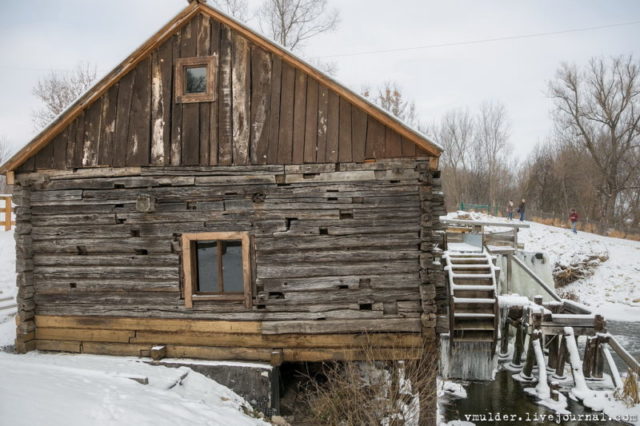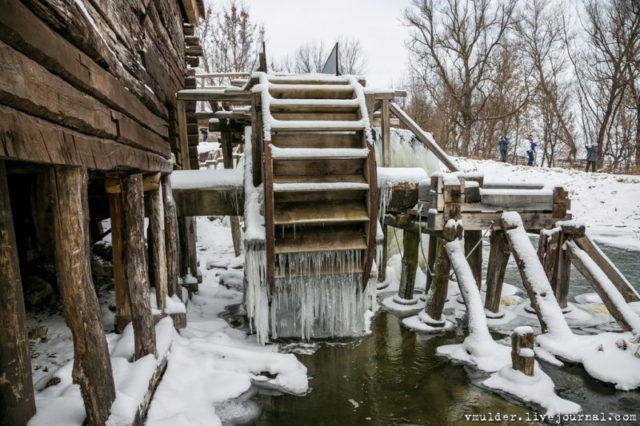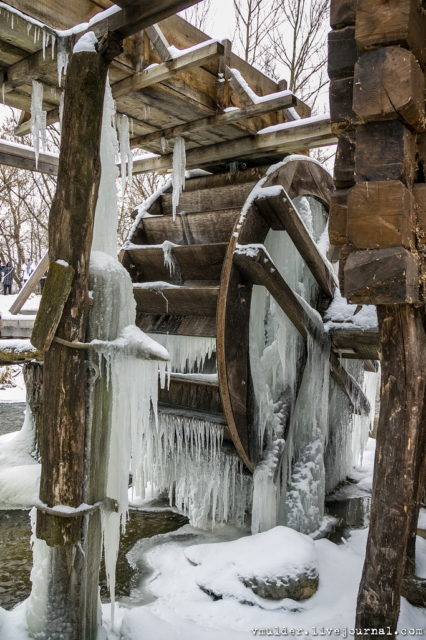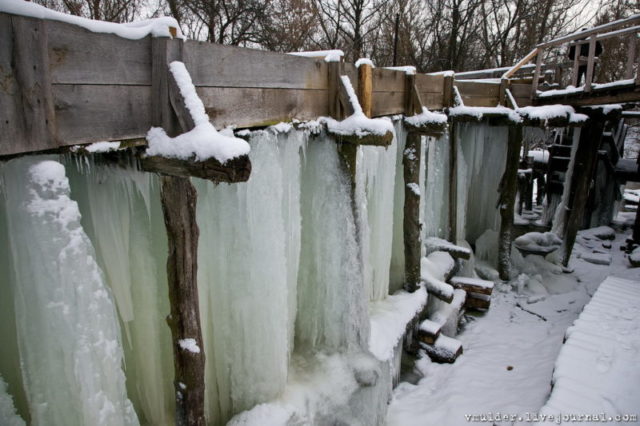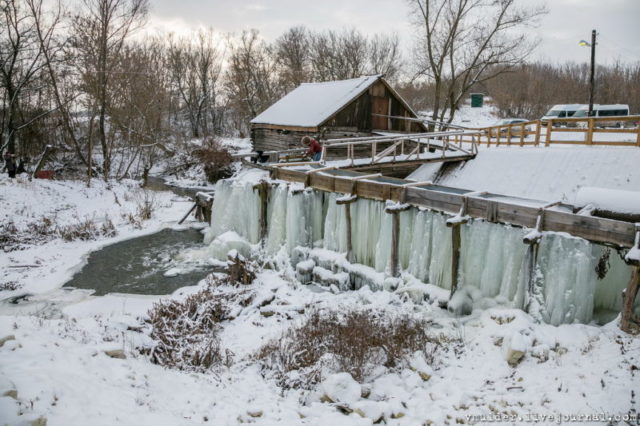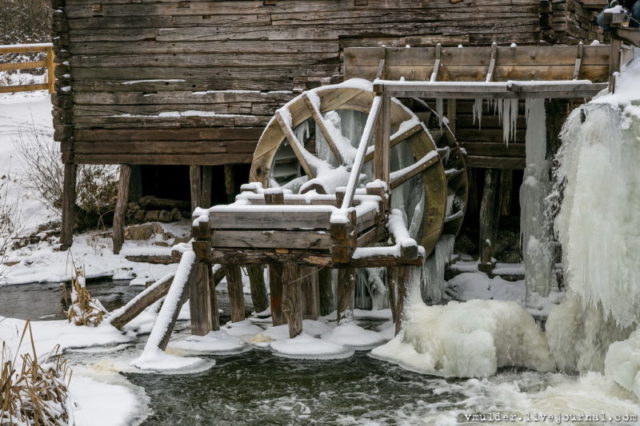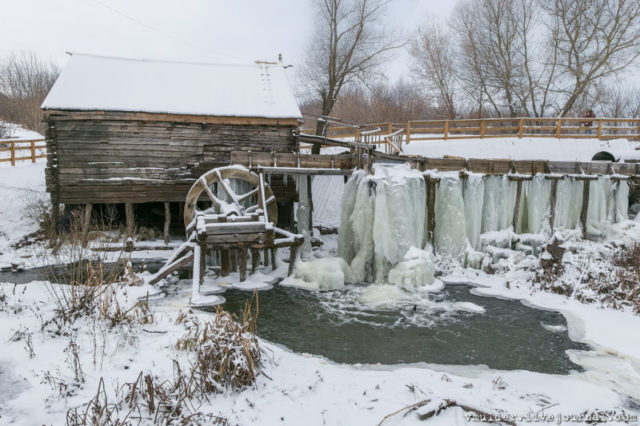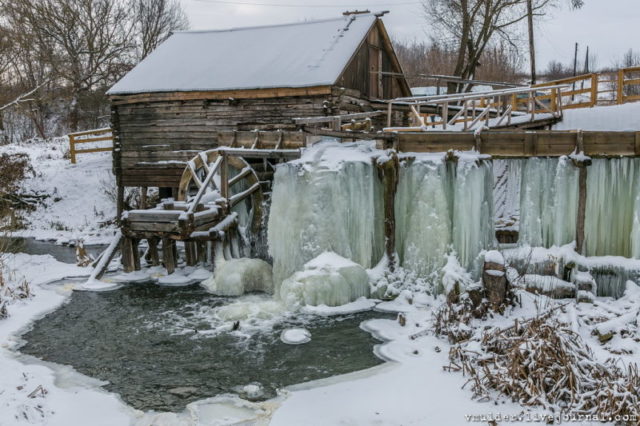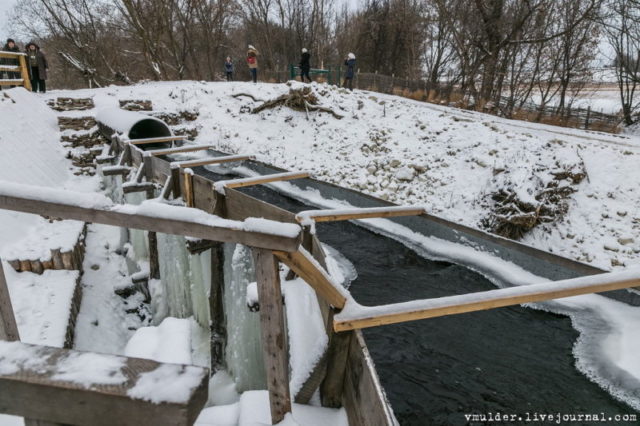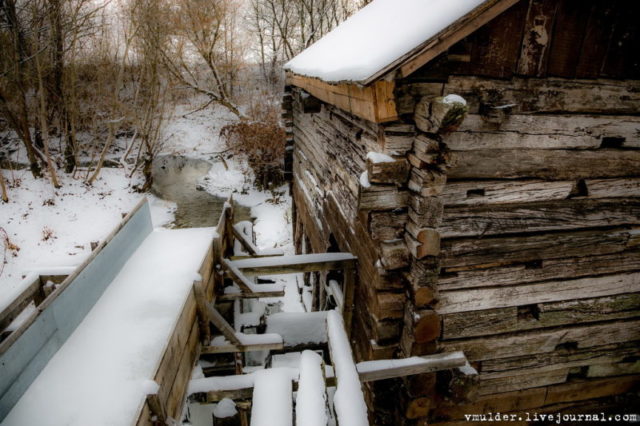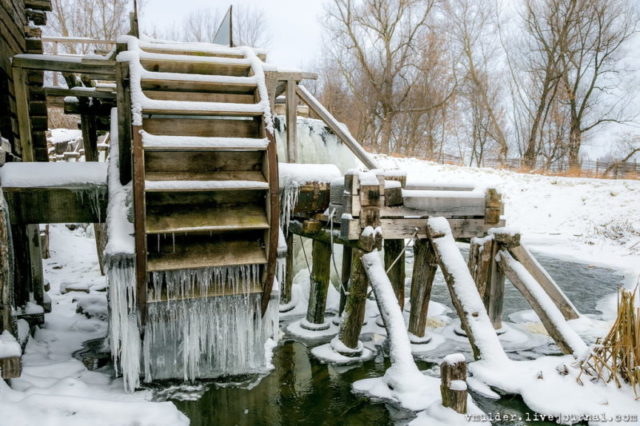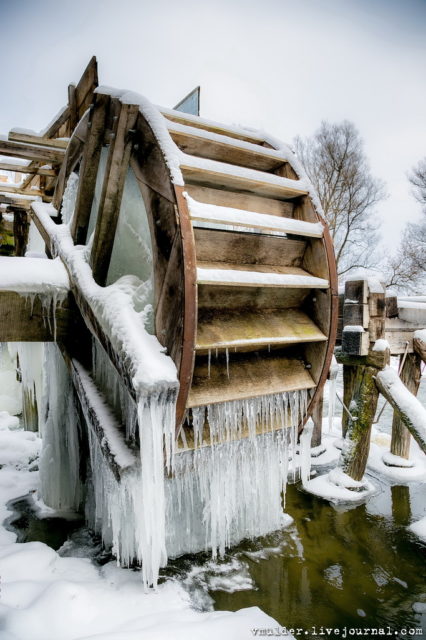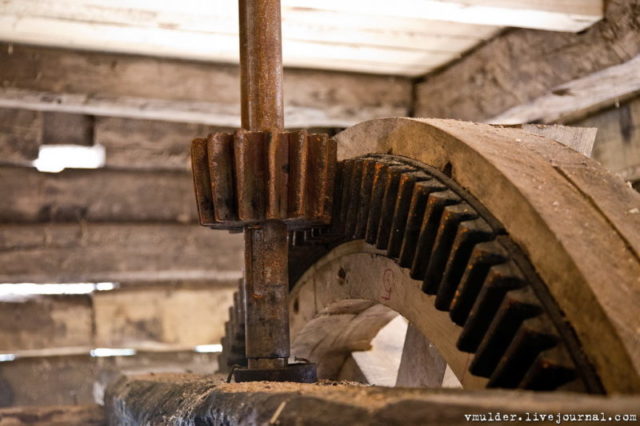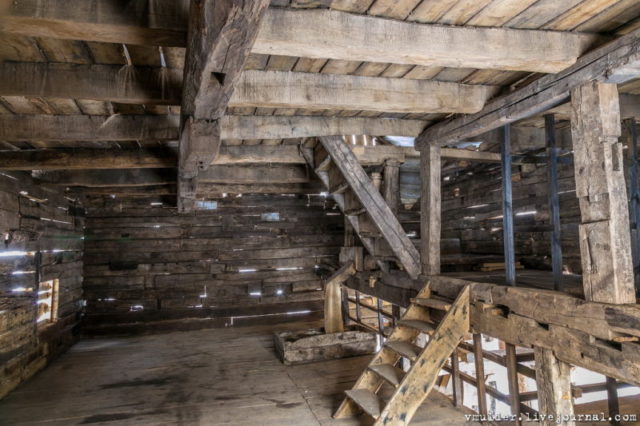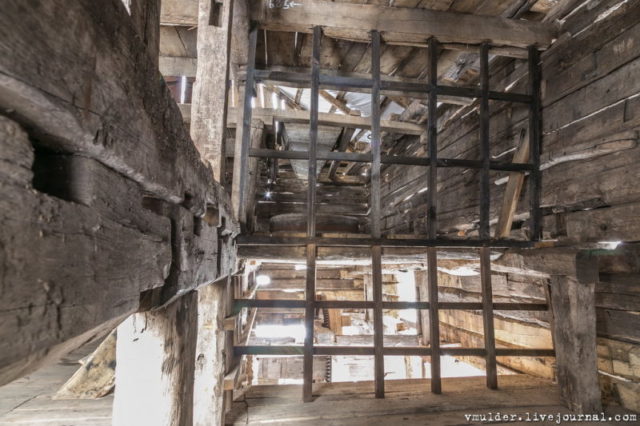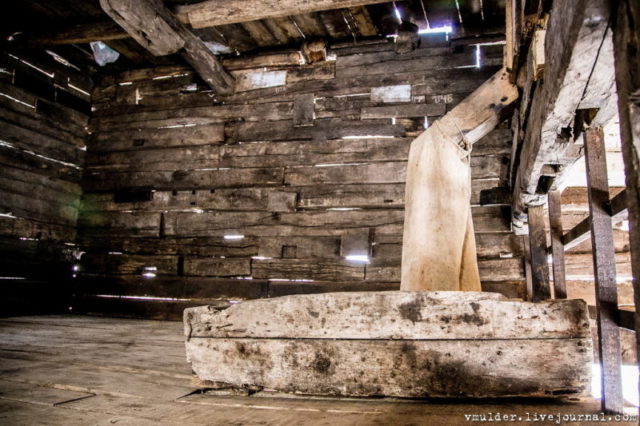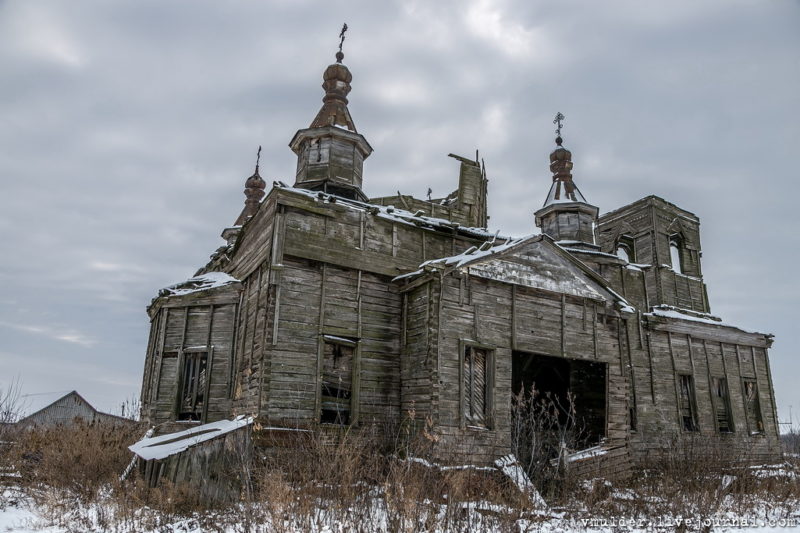First let’s take a look at the gorgeous abandoned wooden church in Kursk Oblast, Russia. Church of the Intercession of the Blessed Virgin is located in a small village called Kamenka. To this day, very little is known about this church.
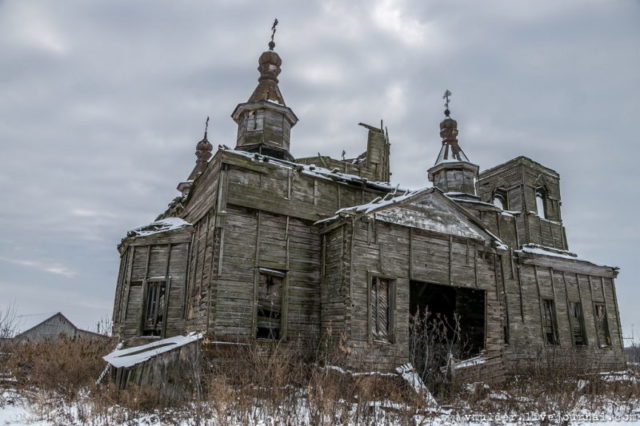
It was built in 1893 as a rural church. In the years of Soviet power in about 1924 it was closed down and used as a granary.
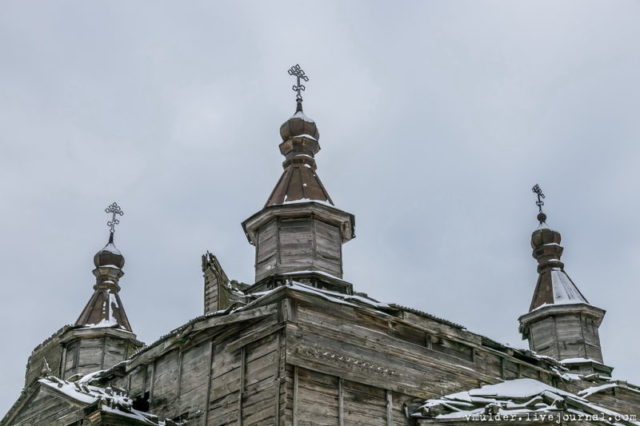
During Soviet rampages of churches in the 1920s, Orthodox churches were plundered and robbed, with many objects of worship taken away and destroyed. The crosses at the top of the domes were taken down. However, this did not happen to this church, and the crosses are intact, they even look new. This could not have been done in the 1990s since there were no organized renovation efforts, so why and how the church managed to retain or perhaps get new crosses remains a mystery.
At present, the church is almost completely destroyed and cannot be restored.
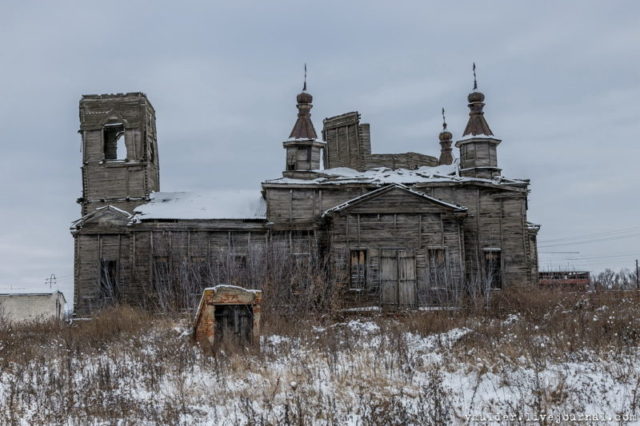
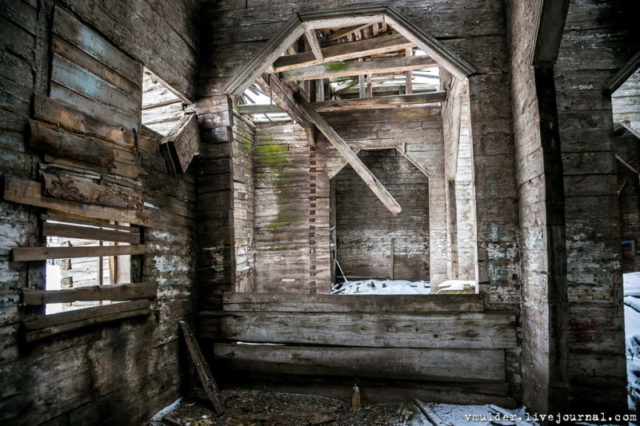
Mulder
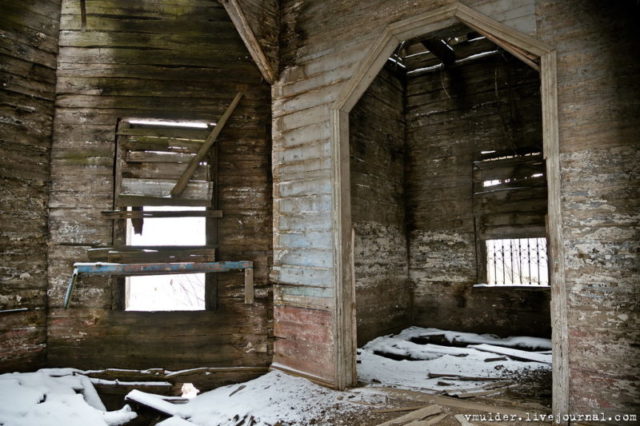
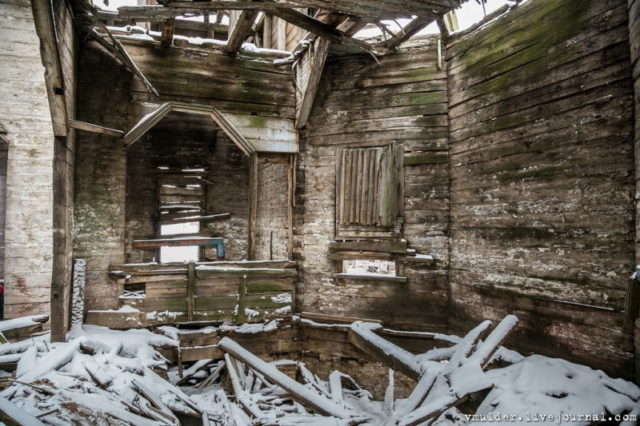
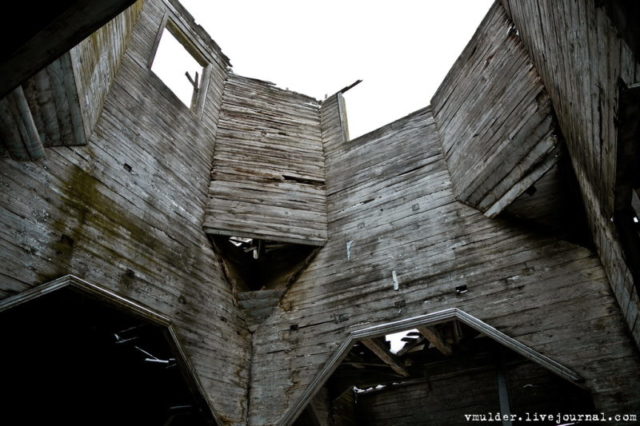
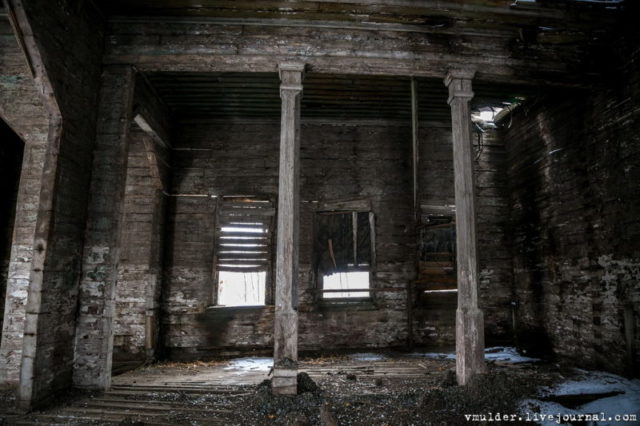
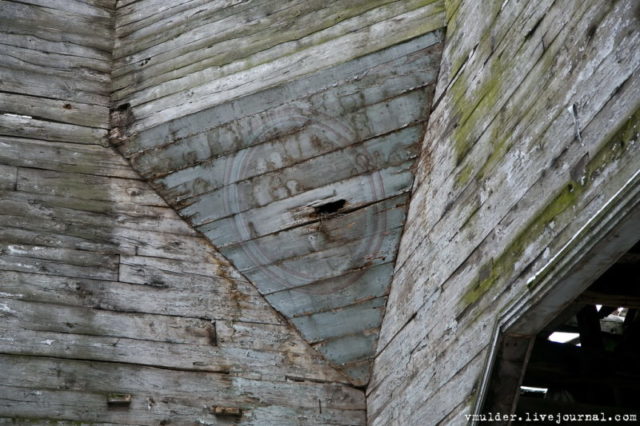
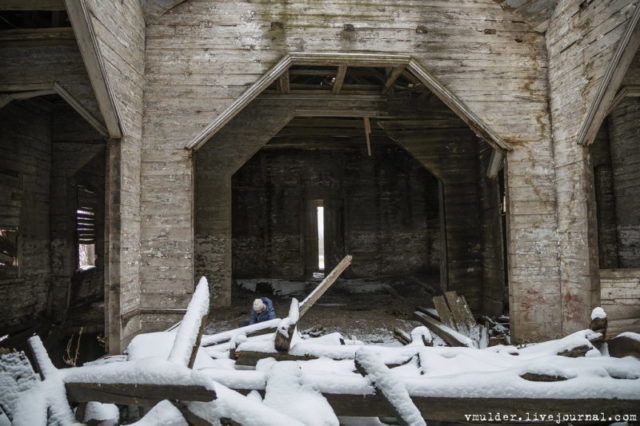
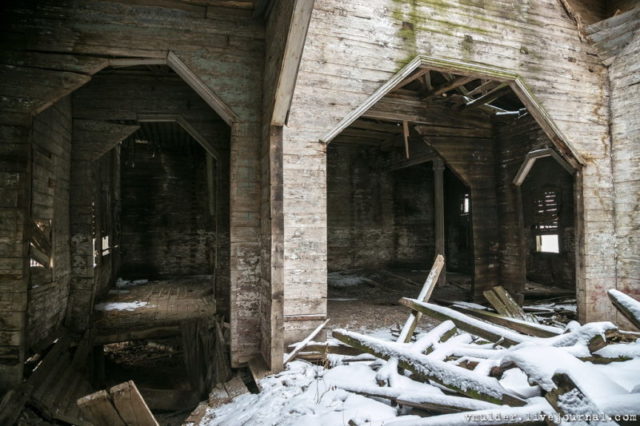
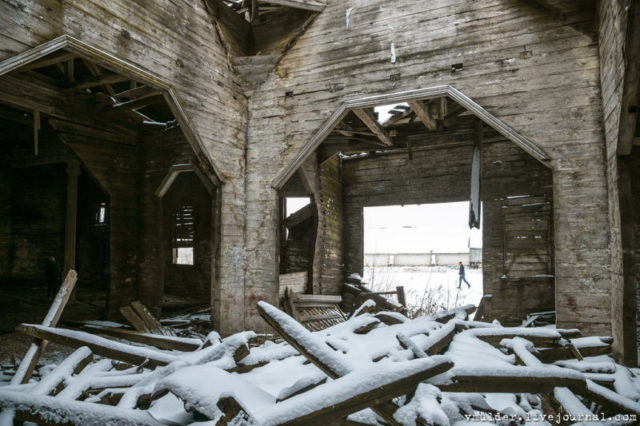
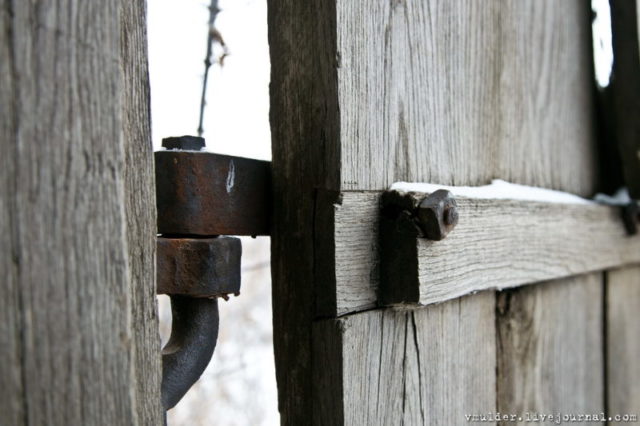
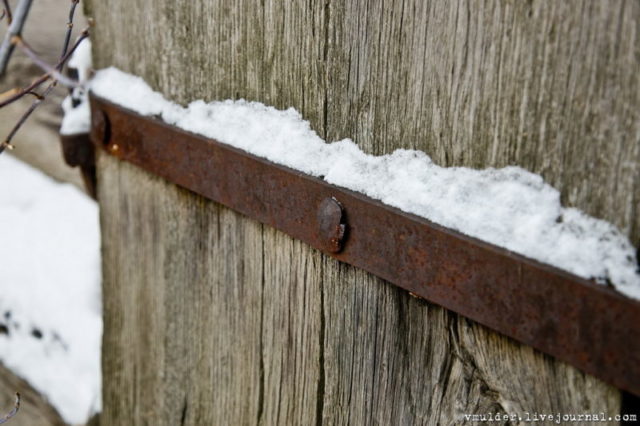
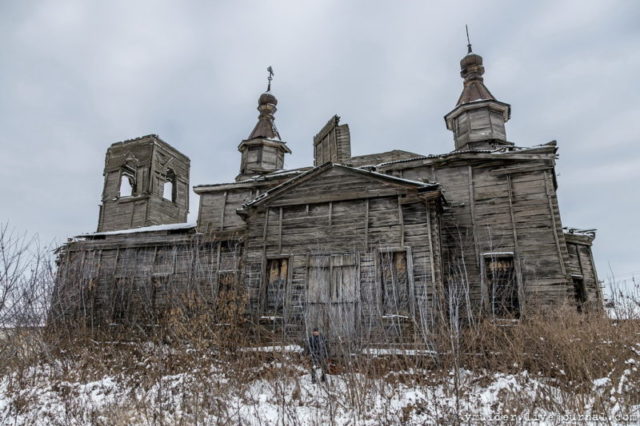
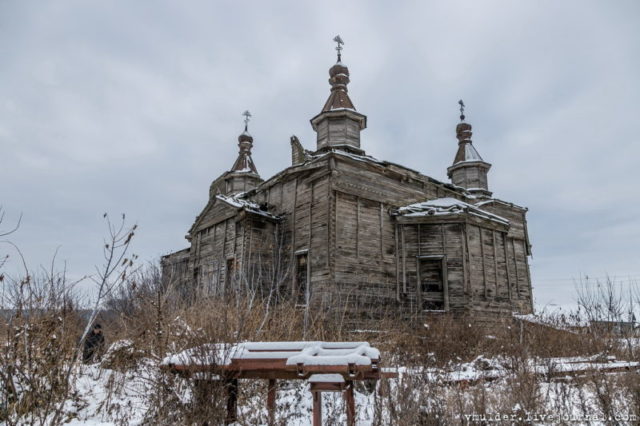
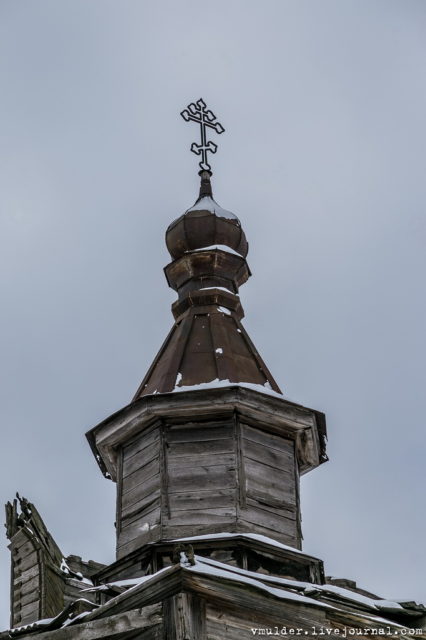
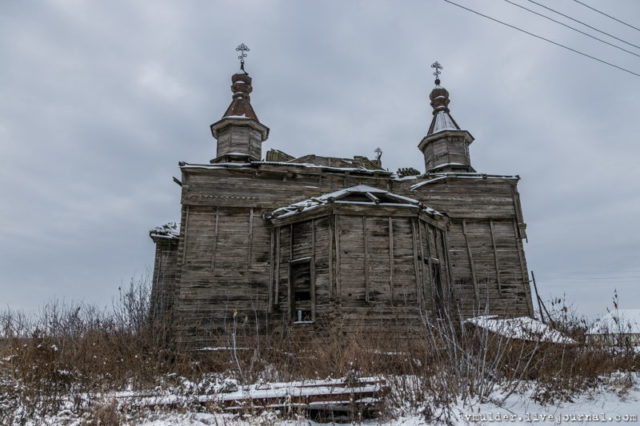
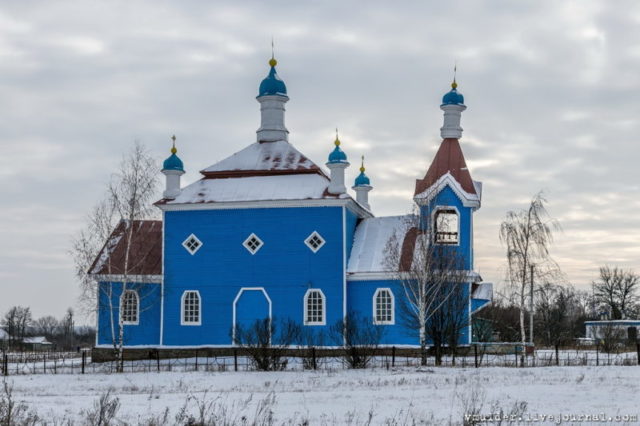
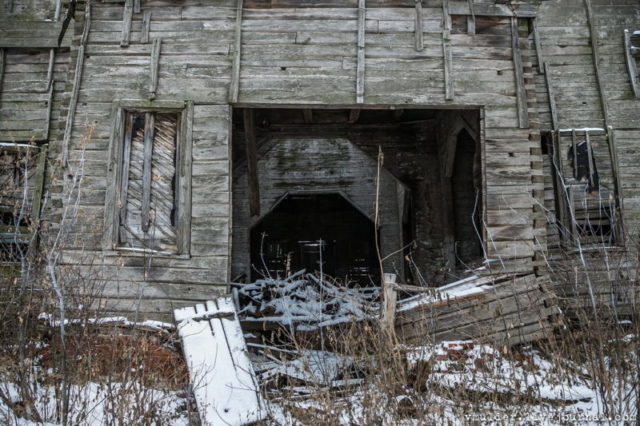
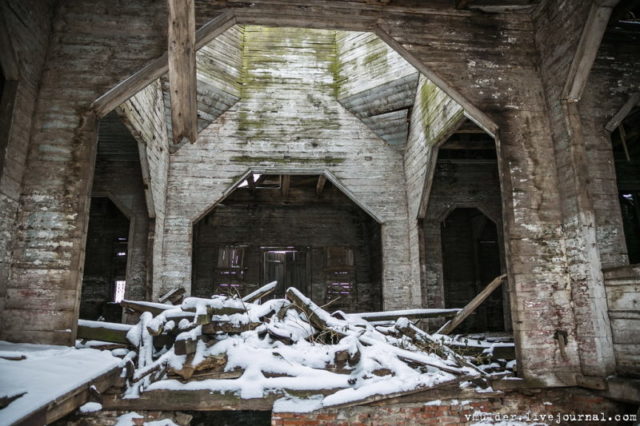
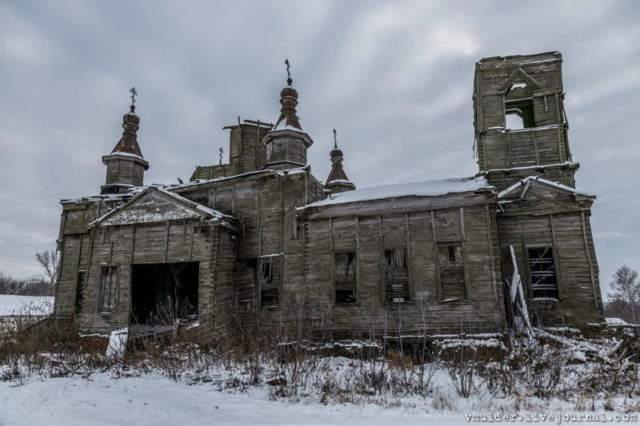
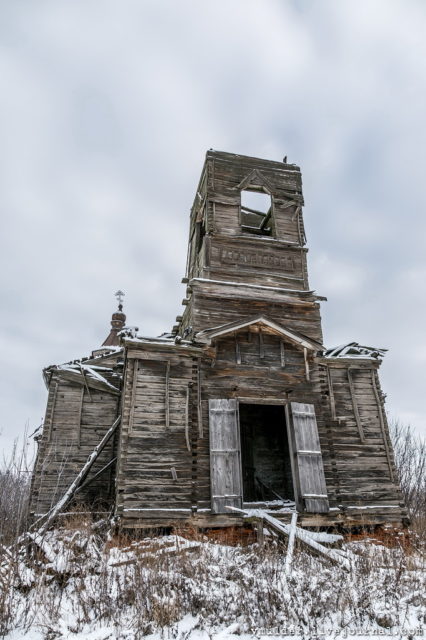
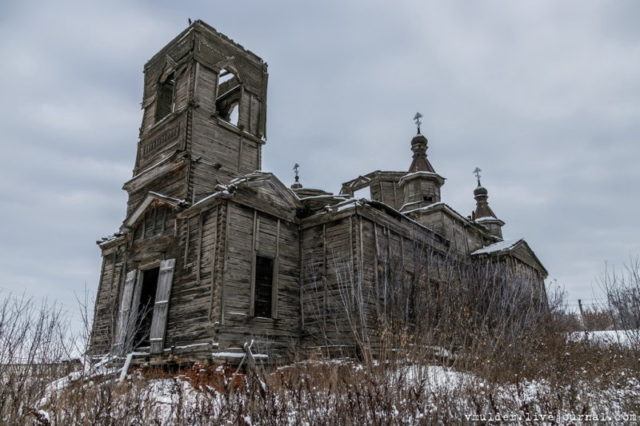
Now we come to the windmill. Just as is the case with the church, the precise history of the windmill is unknown and a subject of debates. The windmill was originally built by villagers. It is located in a small hamlet called Rybinskie Budy, less than 10 km away from Kamenka.
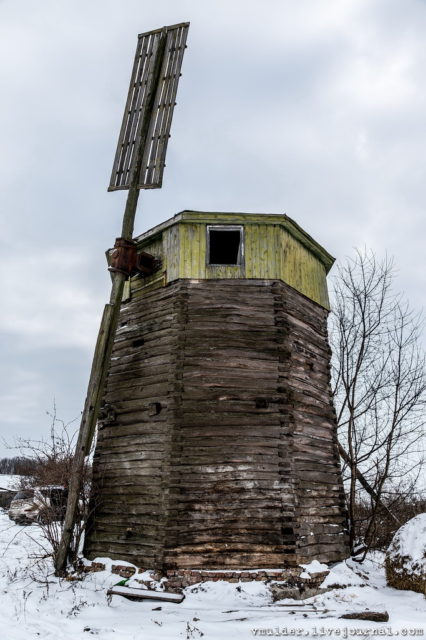
The single vertical blade is actually a monument for the windmill, reminding locals of what this construction once was. Interestingly, this blade is not an original blade of the windmill, which is where different theories spring up.
According to one version, the windmill was at one point converted into a granary and then the blade was attached to commemorate its original use. The other tale goes that it was actually a granary at first, which then was made into a symbolic monument of a windmill, for some bizarre reason. Locals are said to trust the first story more.
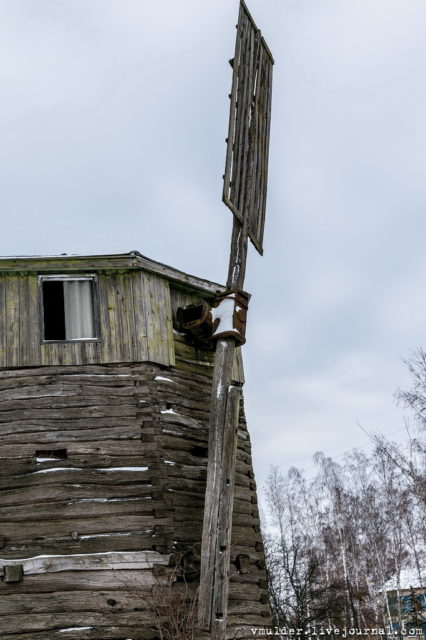
Even though the windmill does not have its blades, the fixing for the blades is original. At present this low-rise building is used as – you guessed it – a granary.
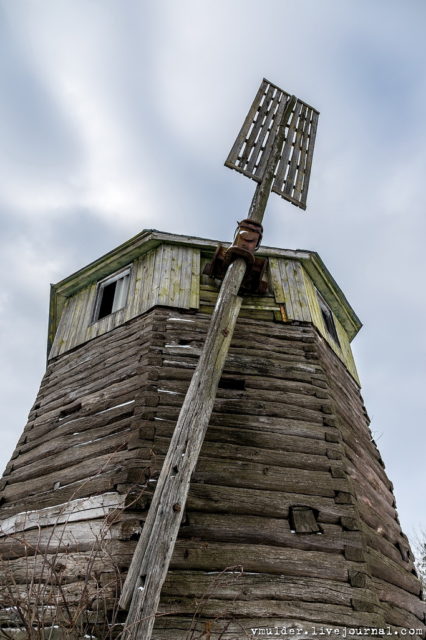
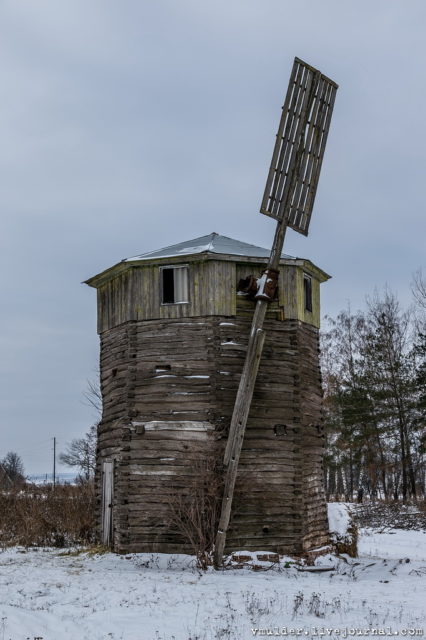
Another interesting structure in the area is the abandoned watermill. It is located a little further away from the previous objects, about 30 km from the windmill, in a hamlet called Krasnikovo. The windmill looks like it is from a fairy-tale, and different associations spring up: it could be the mill where the evil miller-sorcerer from “Krabat” lived, it could be the dwelling of Baba Yaga from Russian folk tales.
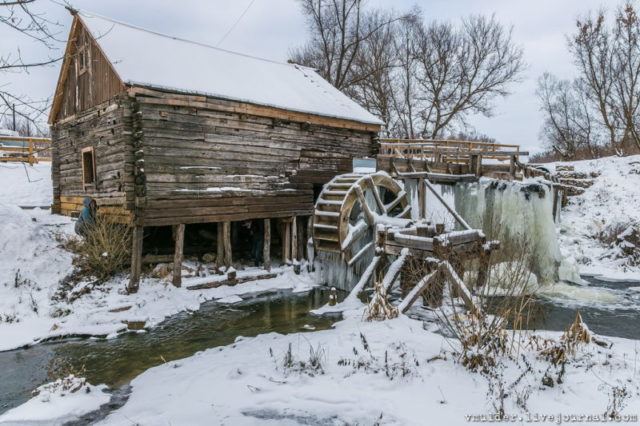
The watermill was built in 1861, the exact year when Emperor Alexander II granted Russian serfs freedom. The owner of the mill was a wealthy landlord, who gave it to his daughter’s dowry. She married a simple peasant.
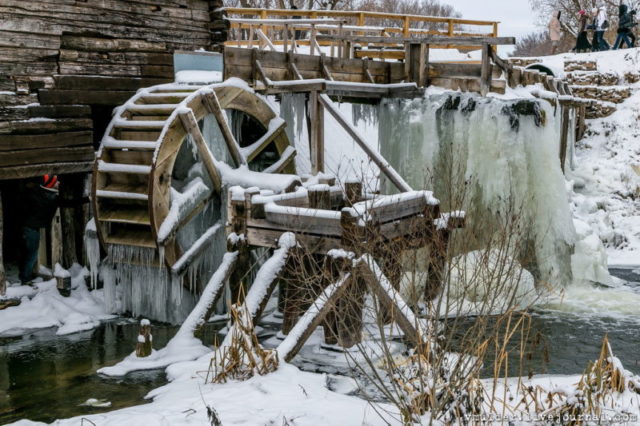
The new owner of the mill Foma Titianets subsequently lost mill during what is known as “dekulakization” – campaign of mass persecution of wealthy peasants labeled “kulaks” between 1929 and 1932. Foma was sent to Siberia and eventually the watermill went to the collective farm “40 years of October.” The watermill was operational until the collective farm was declared bankrupt immediately after Perestroika.
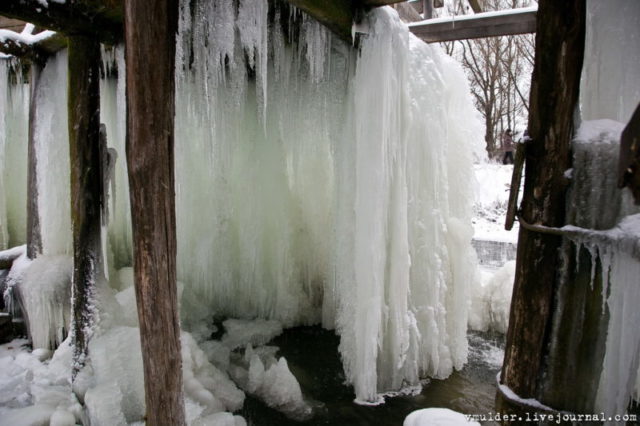
Even though the watermill is no longer operational, it is not completely abandoned. The mill is recognized as a historic monument, and locals still look after it. It even has its own keeper.
Thank you Vmulder for information and amazing pictures!
